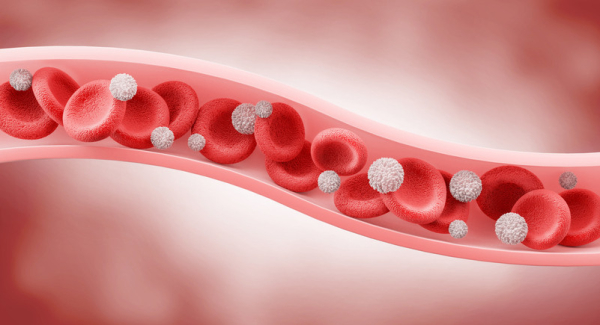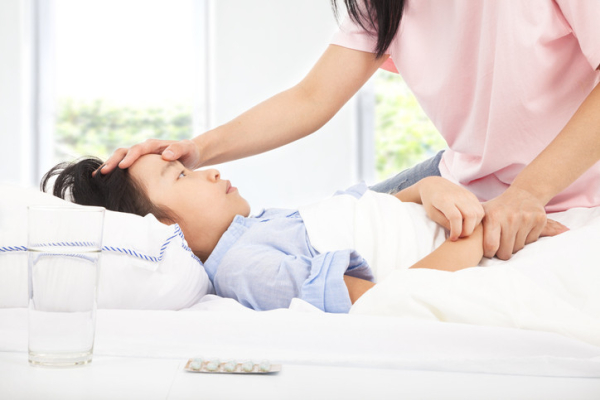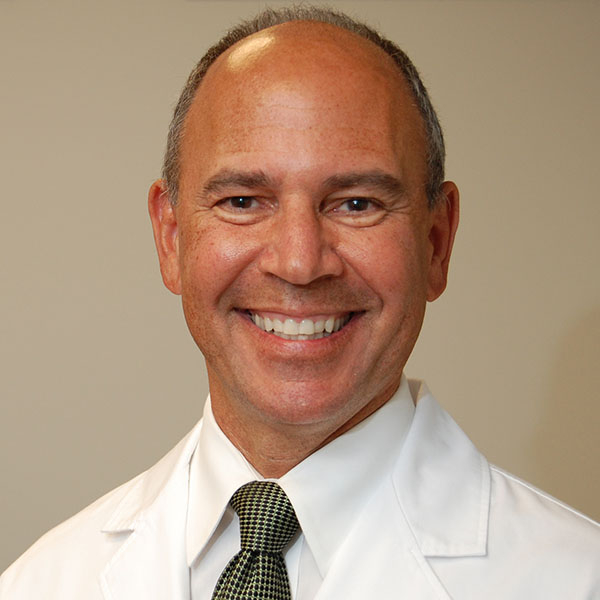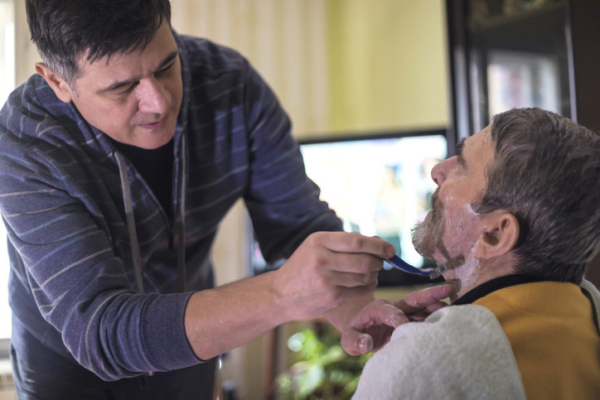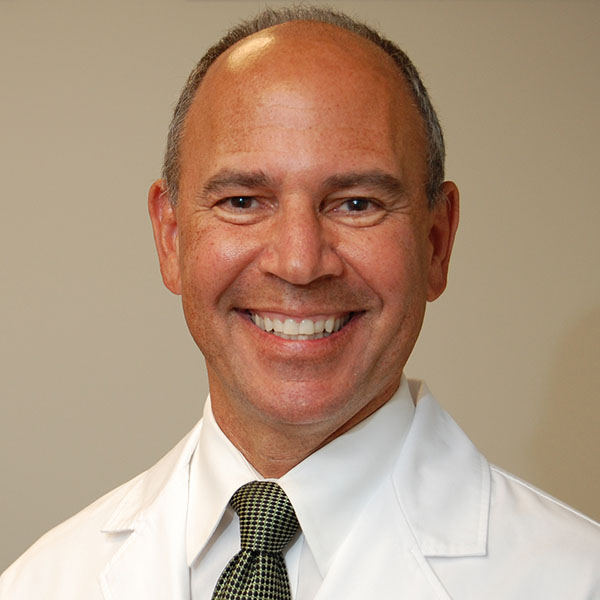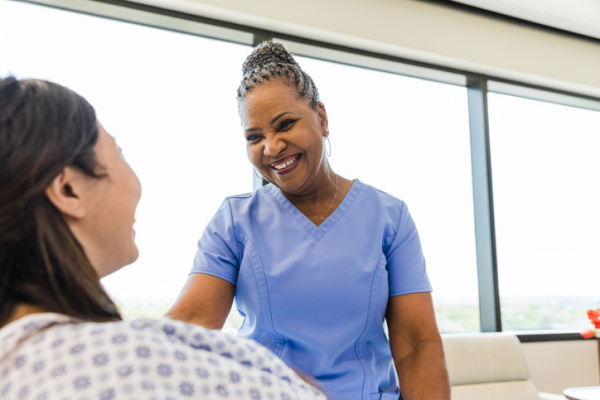
Childbirth — painful, messy, unpredictable — has been part of humankind for time immemorial. And in the US, which has surprisingly high rates of avoidable complications and maternal deaths, more people seem to be seeking out doulas for additional care during pregnancy and birth, says Natalia Richey, interim chief midwife in the Department of Obstetrics and Gynecology at Massachusetts General Hospital.
Some research suggests that doula care may benefit both mother and baby. But what does a birth doula do? While neither a midwife nor a doctor, a professional doula can provide emotional and physical support to women during pregnancy and throughout the birthing process.
Here’s what to know if you’re considering doula care.
What’s the difference between doulas and midwives?
Midwives and doulas tend to have a few overlapping duties. But there’s a key difference: midwives provide medical care and doulas don’t.
- Midwives: Their primary responsibility is to maintain the physical health of a woman and her baby throughout childbirth. Certified nurse-midwives like Richey are also trained nurses, but most midwives have undergone some type of medical training. This may vary depending on state laws.
- Doulas: Unlike midwives, doulas don’t perform any medical tasks. Their main role is to help laboring women remain comfortable and calm using various methods, including suggesting comfort measures and optimal positions for labor and pushing.
“Many women hire doulas if they’re trying to have an unmedicated birth,” Richey says. “Doulas are really good at knowing what techniques — such as walking, showering, massage, or aromatherapy — can help a woman through the pain. It’s like having a coach.”
Are doulas trained or licensed?
Be aware that doula training varies widely. There are no formal rules requiring licensing or certification. Many doulas, however, seek certification from the more than 100 independent organizations that offer some type of doula training and credentials, according to the National Health Law Program.
Is doula care covered by insurance?
Private insurers often do not cover doula care, which can cost several thousand dollars when arranged for privately.
However, some employers — including Walmart — will help pay for doula care. And some hospital systems, particularly in low-income or medically underserved areas, have doula programs aimed at improving maternal care during and after pregnancy. Others may arrange doula support for people with limited resources who might otherwise be alone during the later stages of pregnancy and birth.
As of February 2023, 10 states and the District of Columbia provided Medicaid coverage for doula services. Other states are in the midst of implementing coverage. Most of the states that provide Medicaid coverage for doula care require doulas to be trained or certified by an approved organization.
Can working with a doula improve birth outcomes?
A 2023 analysis in the journal Cureus reviewed 16 individual studies done over 22 years. It found doula support was linked with better birth outcomes, such as fewer C-sections and premature deliveries, and shorter length of labor.
Additionally, the emotional support provided by doulas was associated with less anxiety and stress in birthing mothers. Among low-income women, doula support was shown to improve breastfeeding success.
“It’s impressive,” Richey says. “I think those improved outcomes are due to having an expert in the labor process who isn’t a medical person but is just there for you from moment to moment.”
How do people collaborate with doulas?
Agreements about care vary. Typically, doulas meet with women every few months through their pregnancy to discuss their goals for birth (such as skipping pain medication, for example), and to build rapport with both the expectant person and their spouse or partner.
Like obstetricians, doulas are on call 24/7 to support clients who have gone into labor or who have their labor induced. Doulas stay throughout the birth process.
“Having someone there who’s seen quite a few births, who can support and advocate for them, can be a huge comfort,” says Richey.
This may be especially important to women with limited resources, particularly those who might otherwise be alone during the later stages of pregnancy and birth. “Doulas remind women that they’re okay and can get through this process — all the things many of us take for granted,” Richey says.
How might a doula work with the OB/GYN team?
Usually, this is a seamless process, Richey says. If a hospital arranges for a woman’s doula, OB/GYN team members may meet the doula a couple of times before childbirth. Meanwhile, a doula who’s been hired privately will usually only meet the larger OB/GYN team when the woman arrives at the hospital to give birth.
When everyone sticks to their assigned roles, all goes smoothly. For a doula, that may mean suggesting nonpharmacological ways to ease pain and help labor progress. Boundaries are important, though, when medical intervention is needed.
“If the baby’s heart rate is down, for instance, the expertise needs to be left to the midwife or doctor,” Richey explains.
What questions should you ask if you’re interested in working with a doula?
Richey suggests starting by asking yourself:
- What are my hopes and goals for the childbirth process? Might a doula enhance my ability to achieve them?
- How do I envision my support team during delivery? Do I have a partner, a mom, or a friend I want there? Would a doula add to any support I already have?
- Do I have friends or family members who have used doulas in the past? What were their impressions of the experience? Can they recommend a doula?
If you contact a doula to explore your options, ask about:
- their training and certification
- how many births they’ve attended
- how they believe they can help you during your pregnancy and during labor
- how they will collaborate with your partner or spouse and the medical team
- whether they provide support after a birth — if so, what type of support and for how long?
“Take the time to meet with any doula you’re considering and make sure they’re a good fit,” Richey advises, “because this is someone who will be there during one of the most vulnerable times of your life. Having someone there who doesn’t make you feel safe and comfortable can affect birth in a major way.”
About the Author

Maureen Salamon, Executive Editor, Harvard Women's Health Watch
Maureen Salamon is executive editor of Harvard Women’s Health Watch. She began her career as a newspaper reporter and later covered health and medicine for a wide variety of websites, magazines, and hospitals. Her work has … See Full Bio View all posts by Maureen Salamon
About the Reviewer
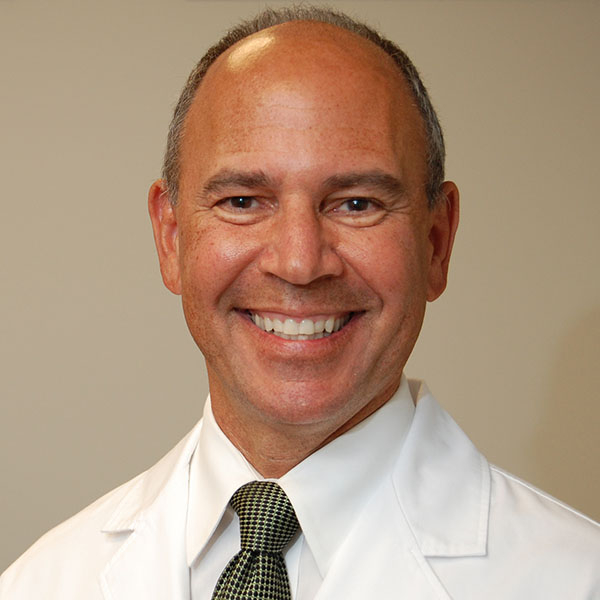
Howard E. LeWine, MD, Chief Medical Editor, Harvard Health Publishing
Dr. Howard LeWine is a practicing internist at Brigham and Women’s Hospital in Boston, Chief Medical Editor at Harvard Health Publishing, and editor in chief of Harvard Men’s Health Watch. See Full Bio View all posts by Howard E. LeWine, MD

